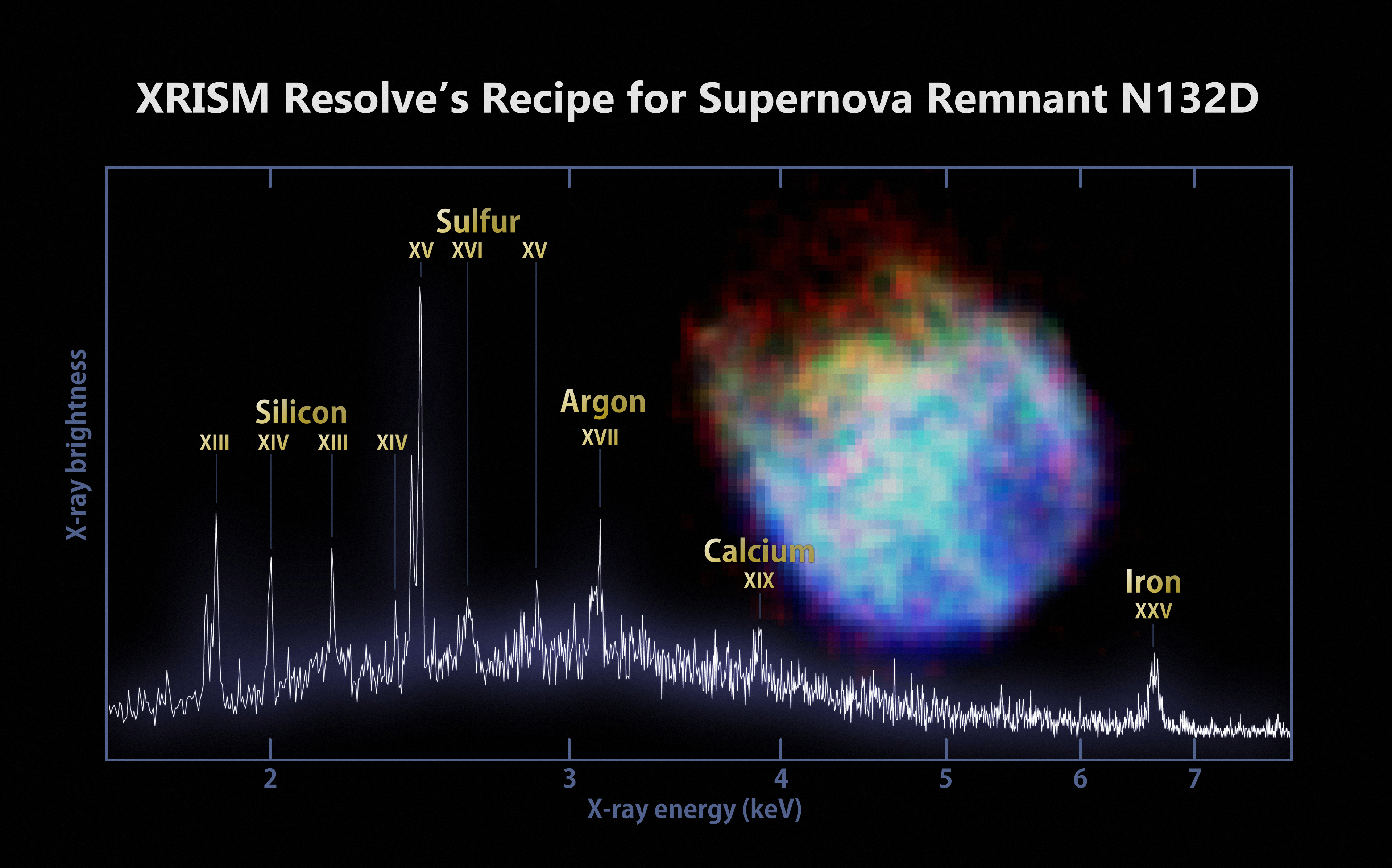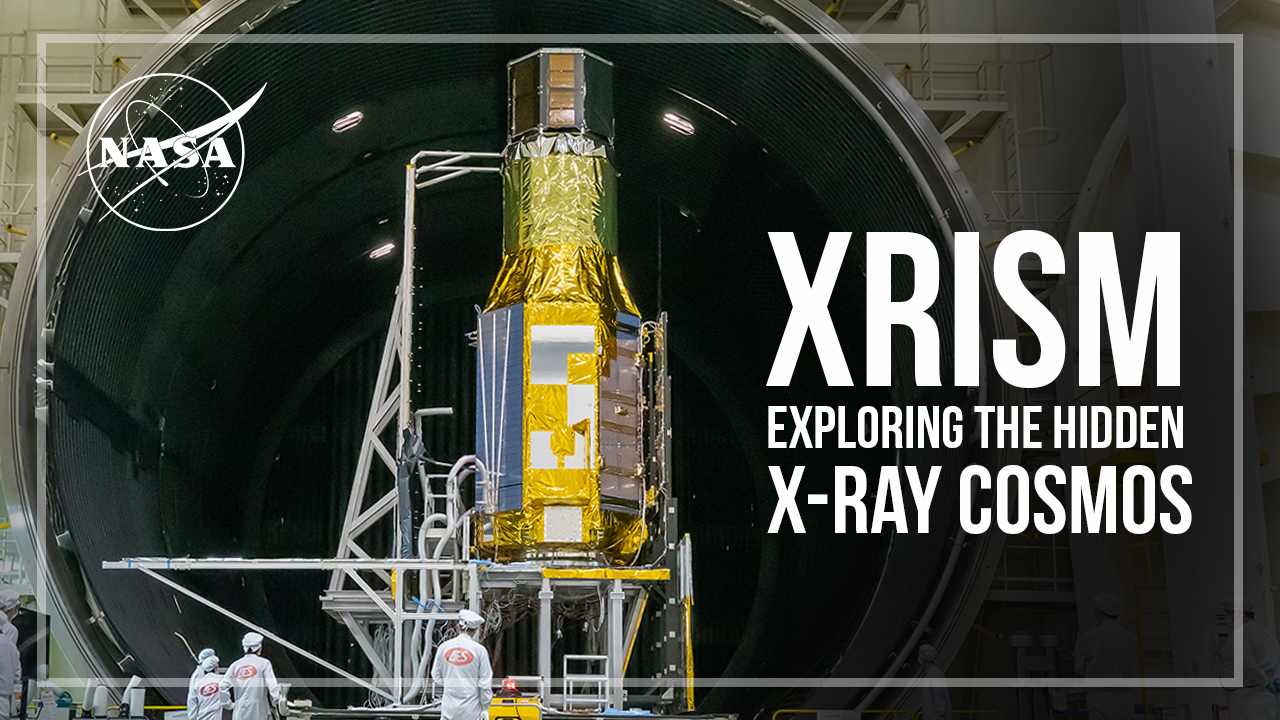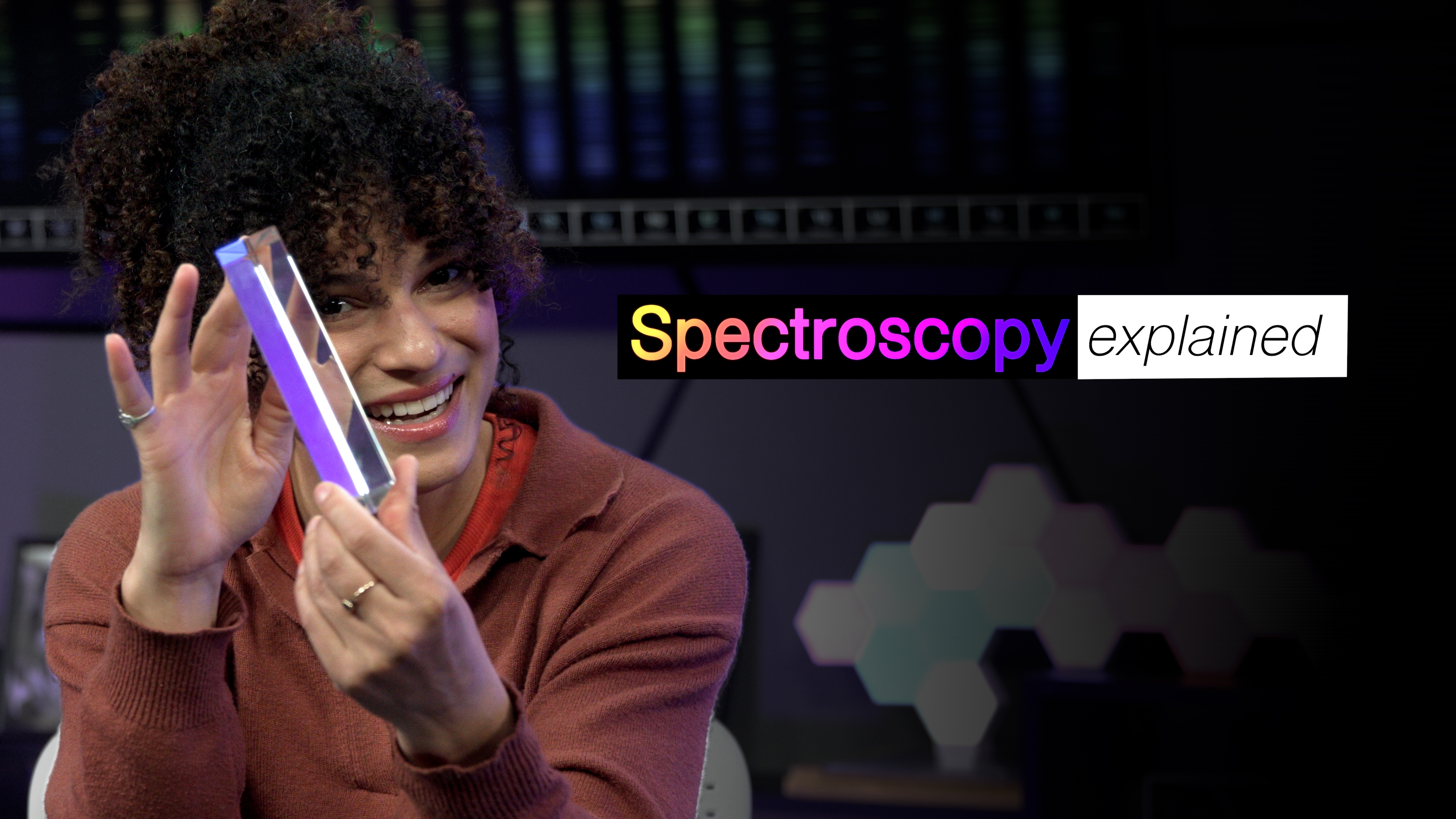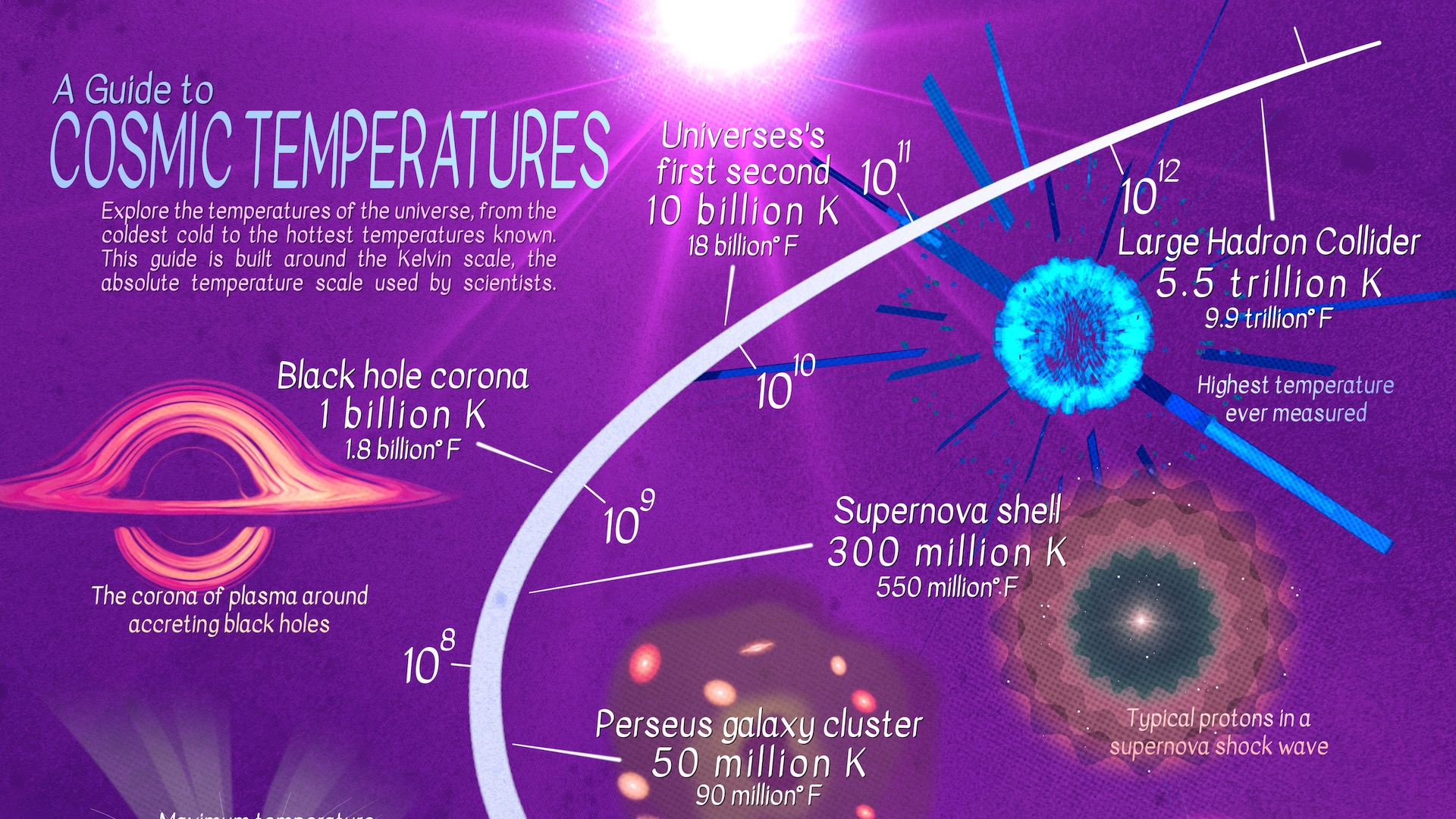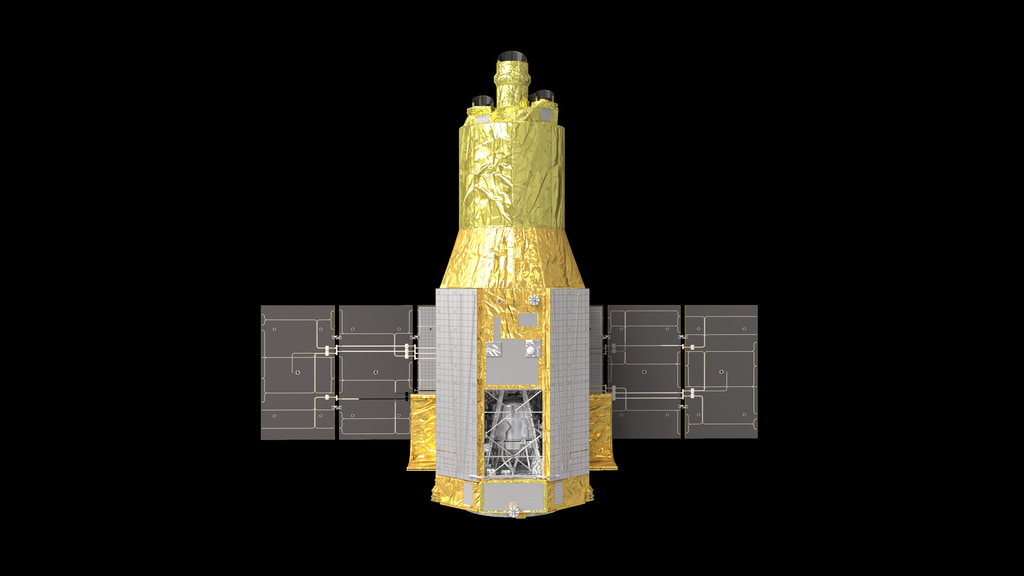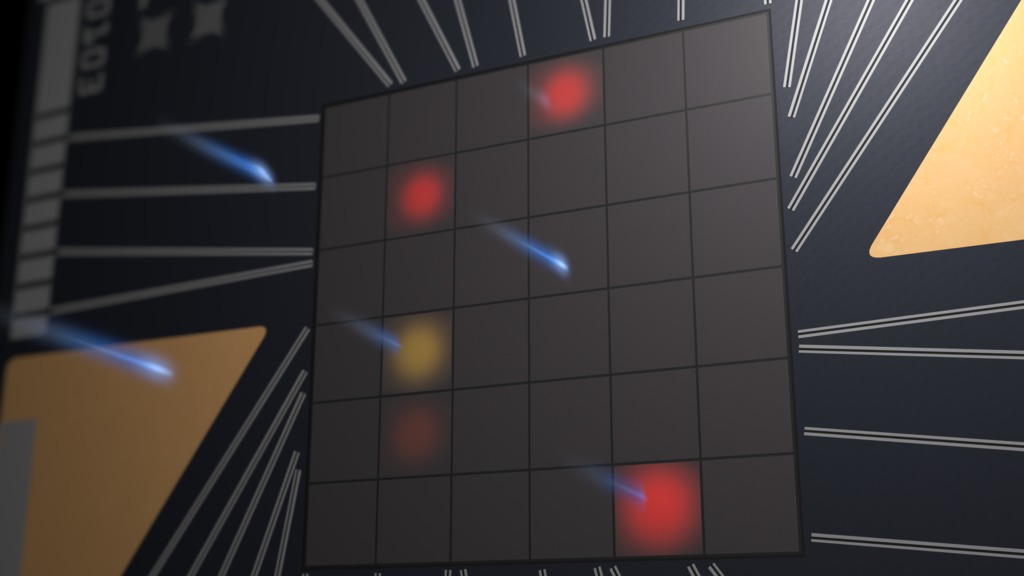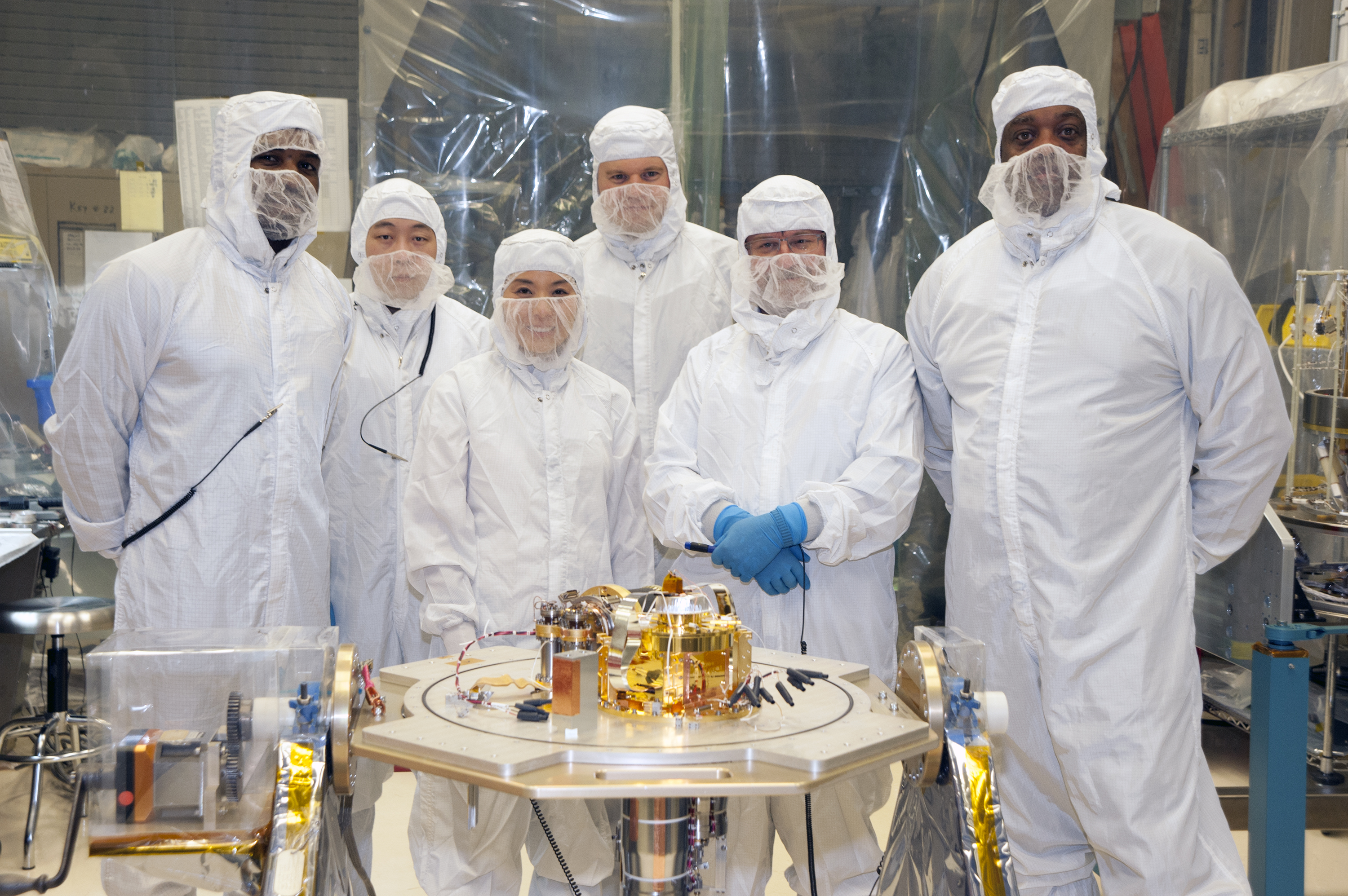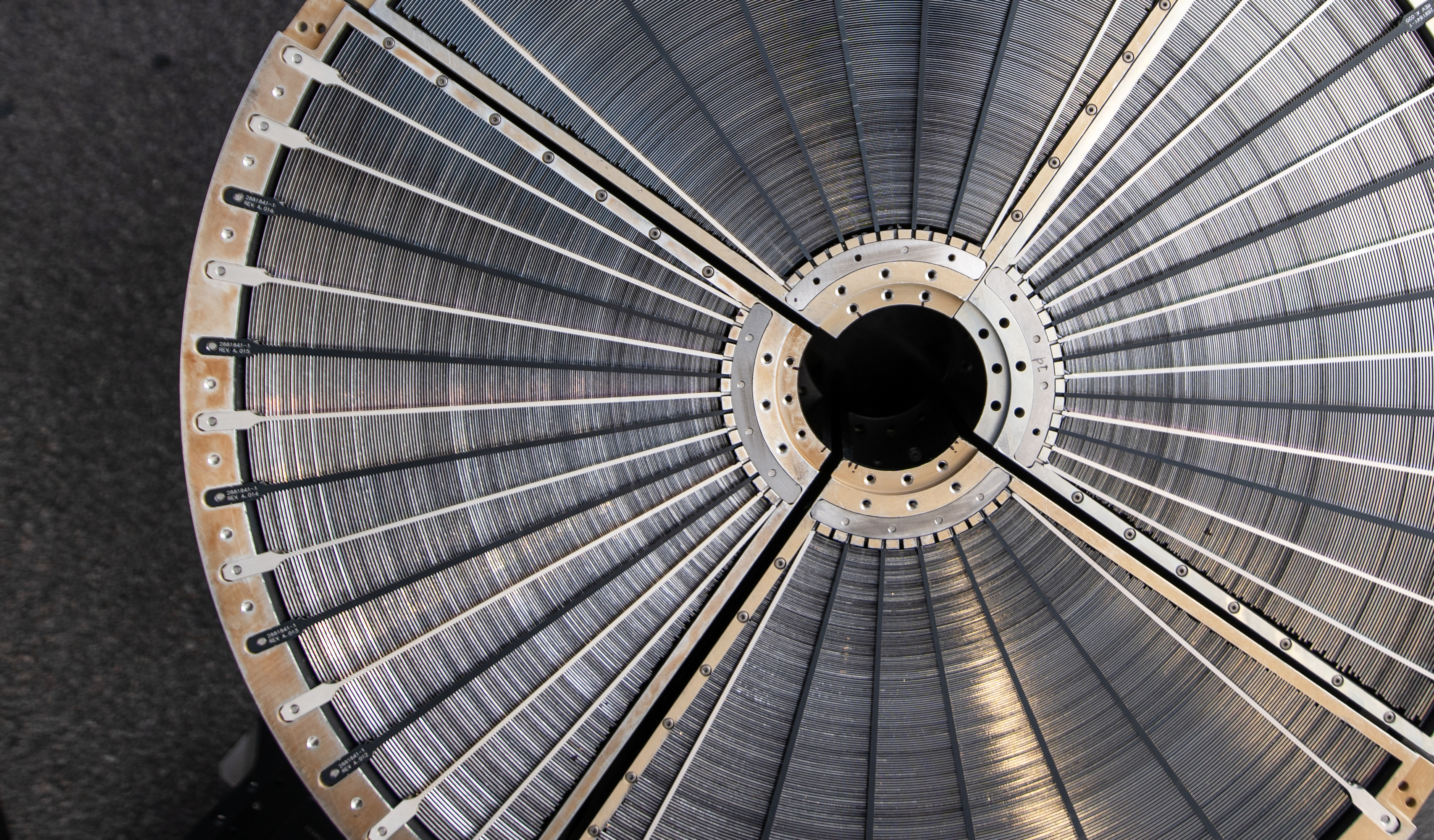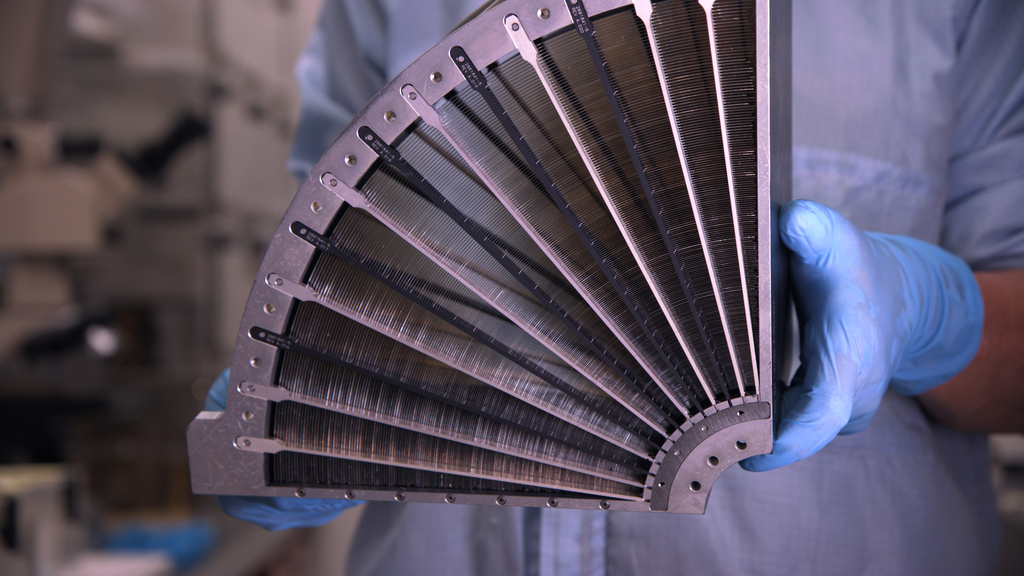XRISM
Overview
XRISM (X-ray Imaging and Spectroscopy Mission) is a JAXA/NASA collaborative mission with ESA participation. It launched from Japan in September of 2023 and is investigating the X-ray sky using high-resolution spectroscopy and imaging.
News Stories
XRISM Mission Captures Unmatched Data With Just 36 Pixels
Go to this pageWatch to learn more about how the Resolve instrument aboard XRISM captures extraordinary data on the make-up of galaxy clusters, exploded stars, and more using only 36 pixels.Credit: NASA’s Goddard Space Flight CenterMusic: "Stop and Hide" and "Wading Through" from Universal Production MusicWatch this video on the NASA Goddard YouTube channel.Complete transcript available. || XRISM_36_Pixels_Still.jpg (1920x1080) [959.9 KB] || XRISM_36_Pixels_Still_searchweb.png (320x180) [94.7 KB] || XRISM_36_Pixels_Still_thm.png (80x40) [7.0 KB] || 14463_XRISM_36Pixels_Captions.en_US.srt [4.6 KB] || 14463_XRISM_36Pixels_Captions.en_US.vtt [4.4 KB] || 14463_XRISM_36Pixels_Good.mp4 [148.9 MB] || 14463_XRISM_36Pixels_Best.mp4 [514.8 MB] || 14463_XRISM_36Pixels_ProRes_1920x1080_2997.mov [2.4 GB] ||
XRISM Reveals Its First Look at X-ray Cosmos
Go to this pageXRISM’s Resolve instrument captured data from supernova remnant N132D in the Large Magellanic Cloud to create the most detailed X-ray spectrum of the object ever made. The spectrum reveals peaks associated with silicon, sulfur, argon, calcium, and iron. Inset at right is an image of N132D captured by XRISM’s Xtend instrument.Credit: JAXA/NASA/XRISM Resolve and Xtend || Resolve_N132D_Spectrum.jpg (3840x2395) [1.0 MB] || Resolve_N132D_Spectrum_searchweb.png (320x180) [45.7 KB] || Resolve_N132D_Spectrum_thm.png (80x40) [4.7 KB] ||
XRISM: Exploring the Hidden X-ray Cosmos
Go to this pageWatch this video to learn more about XRISM (X-ray Imaging and Spectroscopy Mission), a collaboration between JAXA (Japan Aerospace Exploration Agency) and NASA.Credit: NASA's Goddard Space Flight CenterMusic Credits: Universal Production MusicLights On by Hugh Robert Edwin Wilkinson Dreams by Jez Fox and Rohan JonesChanging Tide by Rob ManningWandering Imagination by Joel GoodmanIn Unison by Samuel Sim || YTframe_XRISM_Exploring_XrayCosmos.jpg (1280x720) [668.5 KB] || YTframe_XRISM_Exploring_XrayCosmos_searchweb.png (320x180) [100.3 KB] || YTframe_XRISM_Exploring_XrayCosmos_thm.png (80x40) [7.6 KB] || XRISM_Exploring_the_Hidden_Xray_Cosmos.mov (3840x2160) [21.6 GB] || XRISM_Exploring_the_Hidden_Xray_Cosmos.mp4 (3840x2160) [3.4 GB] || XRISM_Exploring_the_Hidden_Xray_Cosmos.webm (3840x2160) [107.8 MB] || XRISM_Exploring_the_Hidden_Xray_Cosmos.en_US_FR.en_US.srt [7.8 KB] || XRISM_Exploring_the_Hidden_Xray_Cosmos.en_US_FR.en_US.vtt [7.4 KB] ||
Spectroscopy, Explained
Go to this pageVideo producer Sophia Roberts explains the basic principles behind spectroscopy, the science of reading light to determine the size, distance, spin and chemical composition of distant objects in space. Complete transcript available.Music Credits:Universal Production MusicOxygenate the Idea – by Amon Turner, Banksman, Eben StoneJungle Bounce – by Siddharth NadkarniSilent Patient – by Paul Reeves Background Story - by Peter LarsenData Dynamism – by Florian Moenks and Aron Wright Watch this video on the NASA Goddard YouTube channel. || Spectroscopy,_Explained_Thumbnail.jpg (3840x2160) [2.2 MB] || Spectroscopy,_Explained_Thumbnail_searchweb.png (320x180) [75.1 KB] || Spectroscopy,_Explained_Thumbnail_thm.png (80x40) [6.3 KB] || Spectroscopy,_Explained_Final_1080.mp4 (1920x1080) [412.9 MB] || Spectroscopy,_Explained_Final_ProRes.mov (3840x2160) [43.3 GB] || Spectroscopy,_Explained_Final_Best_4k.mp4 (3840x2160) [2.5 GB] || Spectroscopy_Explained.mp4 (3840x2160) [1.1 GB] || Spectroscopy_Explained.webm (3840x2160) [125.6 MB] || SpectroscopyExplainedAdjustedCaptions.en_US.srt [11.1 KB] || SpectroscopyExplainedAdjustedCaptions.en_US.vtt [10.5 KB] ||
A Guide to Cosmic Temperatures
Go to this pageExplore the temperatures of the cosmos, from absolute zero to the hottest temperatures yet achieved, with this infographic. Targets for the XRISM mission include supernova remnants, binary systems with stellar-mass black holes, galaxies powered by supermassive black holes, and vast clusters of galaxies.Credit: NASA's Goddard Space Flight Center/Scott WiessingerMachine-readable PDF copy || Cosmic_Temperatures_Infographic_Final_small.jpg (1383x2048) [1.3 MB] || Cosmic_Temperatures_Infographic_Final_Full.png (5530x8192) [60.5 MB] || Cosmic_Temperatures_Infographic_Final_Full.jpg (5530x8192) [10.3 MB] || Cosmic_Temperatures_Infographic_Final_8bit.png (5530x8192) [24.5 MB] || Cosmic_Temperatures_Infographic_Final_Half.png (2765x4096) [7.0 MB] || Cosmic_Temperatures_Infographic_Final_Half.jpg (2765x4096) [4.7 MB] ||
Stills/Graphics
XRISM Reveals Its First Look at X-ray Cosmos
Go to this pageXRISM’s Resolve instrument captured data from supernova remnant N132D in the Large Magellanic Cloud to create the most detailed X-ray spectrum of the object ever made. The spectrum reveals peaks associated with silicon, sulfur, argon, calcium, and iron. Inset at right is an image of N132D captured by XRISM’s Xtend instrument.Credit: JAXA/NASA/XRISM Resolve and Xtend || Resolve_N132D_Spectrum.jpg (3840x2395) [1.0 MB] || Resolve_N132D_Spectrum_searchweb.png (320x180) [45.7 KB] || Resolve_N132D_Spectrum_thm.png (80x40) [4.7 KB] ||
A Guide to Cosmic Temperatures
Go to this pageExplore the temperatures of the cosmos, from absolute zero to the hottest temperatures yet achieved, with this infographic. Targets for the XRISM mission include supernova remnants, binary systems with stellar-mass black holes, galaxies powered by supermassive black holes, and vast clusters of galaxies.Credit: NASA's Goddard Space Flight Center/Scott WiessingerMachine-readable PDF copy || Cosmic_Temperatures_Infographic_Final_small.jpg (1383x2048) [1.3 MB] || Cosmic_Temperatures_Infographic_Final_Full.png (5530x8192) [60.5 MB] || Cosmic_Temperatures_Infographic_Final_Full.jpg (5530x8192) [10.3 MB] || Cosmic_Temperatures_Infographic_Final_8bit.png (5530x8192) [24.5 MB] || Cosmic_Temperatures_Infographic_Final_Half.png (2765x4096) [7.0 MB] || Cosmic_Temperatures_Infographic_Final_Half.jpg (2765x4096) [4.7 MB] ||
XRISM Additional Images
Go to this pageThe XRISM spacecraft during acoustic testing at JAXA's Tsukuba Space Center in December 2022. These and other tests confirm that the spacecraft can withstand the severe vibrations and sounds of its rocket launch.Credit: JAXA || XRISM_Acoustic_12_23_22.jpg (2832x4240) [6.9 MB] ||
Animations
XRISM Beauty Shots
Go to this pageXRISM turntable animations, available both as 4K/30 and 60 fps movies and as frames. The exposed tank behind the truss structure on the side opposite the solar panels houses the Resolve instrument.Credit: NASA's Goddard Space Flight Center Conceptual Image Lab || XRISM_360_4k_30fps_4444ProRes.00001_print.jpg (1024x576) [56.9 KB] || XRISM_360_4k_30fps_4444ProRes.00001_searchweb.png (180x320) [21.2 KB] || XRISM_360_4k_30fps_4444ProRes.00001_thm.png (80x40) [2.3 KB] || XRISM_360_4k_30fps_h264.mov (1920x1080) [25.3 MB] || XRISM_360_4k_60fps_h264.mov (1920x1080) [112.2 MB] || XRISM_360_4k_30fps_4444ProRes.mov (3840x2160) [1.7 GB] || XRISM_360_4k_30fps (3840x2160) [32.0 KB] || XRISM_360_4k_60fps_4444ProRes.mov (3840x2160) [10.0 GB] || XRISM_360_4k_60fps (3840x2160) [128.0 KB] || XRISM_360_4k_30fps_h264.mp4 (3840x2160) [24.7 MB] || XRISM_360_4k_60fps_h264.mp4 (3840x2160) [73.8 MB] || XRISM_360_4k_30fps_4444ProRes.webm [0 bytes] ||
XRISM Resolve Animation
Go to this pageThis animation illustrates how the microcalorimeter array at the heart of XRISM's revolutionary Resolve soft X-ray spectrometer works. X-ray light collected by a telescope strikes the detector. Each photon heats the material by an amount directly proportional to its energy. The instrument, which is cooled to 50 millikelvins, just above absolute zero, detects this minute temperature change.Credit: NASA's Goddard Space Flight Center || XRISM_Calorimeter-STILL_print.jpg (1024x576) [64.0 KB] || XRISM_Calorimeter-STILL.jpg (3840x2160) [716.3 KB] || XRISM_Calorimeter-STILL_searchweb.png (320x180) [55.3 KB] || XRISM_Calorimeter-STILL_thm.png (80x40) [5.5 KB] || XRISM_Calorimeter-STILL_web.png (320x180) [55.3 KB] || XRISM_Calorimeter-STILL.tiff (3840x2160) [63.3 MB] || XRISM_Calorimeter_Simple_ProRes_3840x2160_60.mov (3840x2160) [1.8 GB] || 3840x2160_16x9_60p (3840x2160) [64.0 KB] || XRISM_Calorimeter_Simple-H264_Best_3840x2160_5994.mov (3840x2160) [448.6 MB] || XRISM_Calorimeter_Simple-H264_Good_3840x2160_2997.mov (3840x2160) [27.1 MB] || XRISM_Calorimeter_Simple_ProRes_3840x2160_60.webm (3840x2160) [4.9 MB] ||
Hardware Raw Footage/B-roll
XRISM: Calorimeter Spectrometer Insert and Mirror Tests
Go to this pageXRISM team members pose with the XRISM Calorimeter Spectrometer Insert in a NASA Goddard clean room. From left to right, they are Bryan James, Mike Sampson, Tomomi Watanabe, Pete Barfknecht, Scott Porter, and Sinclair Douglas.Credit: Larry Gilbert/NASA || GSFC_20191101__2020-2568_07.jpg (3000x1995) [3.6 MB] || GSFC_20191101__2020-2568_07_searchweb.png (320x180) [111.9 KB] || GSFC_20191101__2020-2568_07_thm.png (80x40) [7.7 KB] ||
Mirror Quadrants for XRISM
Go to this pageXRISM team member Yang Soong, a researcher at the University of Maryland, College Park, displays completed mirror elements for an X-ray Mirror Assembly developed for the JAXA/NASA mission. Credit: Taylor Mickal/NASA || GSFC_20190619_XRISM_XMA_Soong_06.jpg (6000x4000) [12.7 MB] ||
Assembling XRISM's X-ray Mirrors
Go to this pageTeam members Lawrence Lozipone of Stinger Ghaffarian Technologies, Inc. and Yang Soong, a researcher at the University of Maryland, College Park, work with flight mirrors for the X-ray Imaging and Spectroscopy Mission (XRISM). Nested aluminum mirror segments – 1,624 of them for each X-ray Mirror Assembly – focus the incoming X-rays for the satellite's science instruments. Credit: NASA's Goddard Space Flight Center || XRISM_Cleanroom_B-roll_1080Still.jpg (1920x1080) [727.5 KB] || XRISM_Cleanroom_B-roll_ProRes_1920x1080_30.mov (1920x1080) [7.0 GB] || XRISM_Cleanroom_B-roll_1080.mp4 (1920x1080) [991.6 MB] || XRISM_Cleanroom_B-roll_ProRes_1920x1080_30.webm (1920x1080) [52.0 MB] ||
